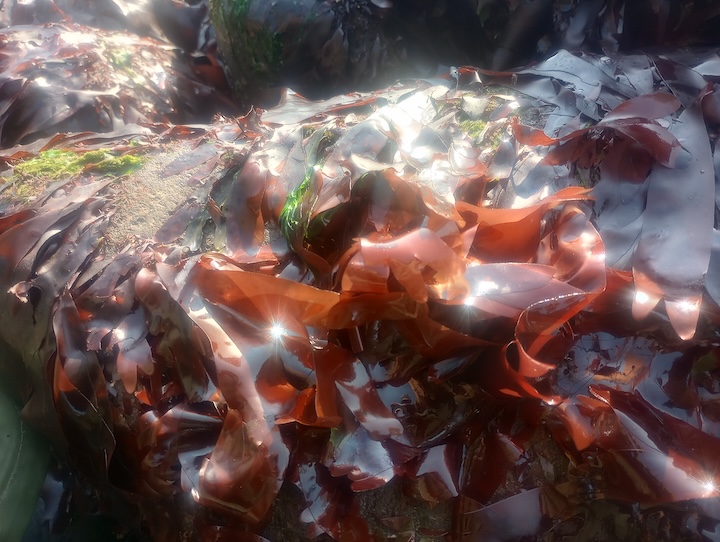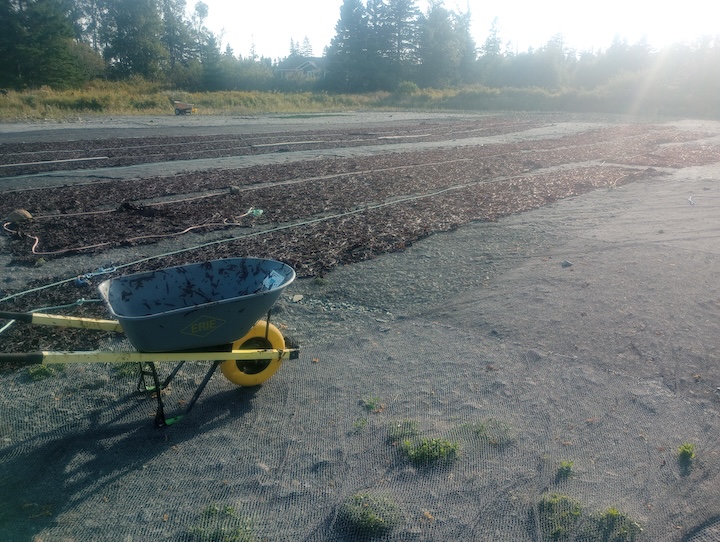By John Welton, Certification and Quality Specialist with MOFGA Certification Services

MOFGA certifies seaweed as organic for human consumption and livestock feed, and we refer to any seaweed intended for human consumption as a “sea vegetable,” or “sea veg.” “Kelp” is a catch-all term that could refer to any of the seaweeds growing in Maine’s waters and intertidal zone. As one can imagine, Maine’s jagged coastline has an abundance of wild-grown seaweed and, in recent years, an increase in open ocean aquaculture, i.e., “farming,” of seaweed grown on moored long-line arrays. Much of the farm-grown kelp is sugar kelp (Saccharina latissima), although winged kelp (Alaria esculenta) is also commonly farmed on lines. Some common wild-harvested species in the Gulf of Maine include rockweed (Ascophyllum nodosum), bladderwrack (Fucus vesiculosis), and the subject of this article, dulse (Palmaria palmata).
Some of the dulse sold throughout Maine comes from a Canadian island in the Bay of Fundy called Grand Manan, which I visited in September 2024 as the organic certification specialist for MOFGA who works with sea vegetable producers. I wanted to learn about dulse and get a better sense of what it takes to produce the organic dried jerky-like food I enjoy in soups and sandwiches. I coordinated the trip with AquaVeggies, a company based on the island that sells dried organic dulse, and was fortunate enough to tag along for a harvest on an unusually warm, sun-soaked afternoon.
My guide, Travis, told me, “I’ve been dulsing since before I can remember,” as we winded down the basalt cliffs towards Dark Harbor, a seasonal fishing village on the west coast of Grand Manan. He grew up on the island harvesting the ruby ribbons that cling to the rocks at the lowest tides, the “dulse tides,” which are some of the lowest on Earth.
I replied with just a nod of my head, my attention grabbed, as we rounded a hairpin turn, by the ocean below, awash in late afternoon sun. The water, even from those heights, was visibly roiling, white capped by a southerly wind riding up the coast. Travis read my growing anxiety as he calmly noted, “We’ll dulse closer in today.”

Despite being distracted by the dramatic scenery, his way of referring to dulse has lingered in my mind as much as the views. I had never heard “dulse” used as a verb before, but “dulsing” speaks to the lifeways that have developed in Grand Manan with and around Palmaria palmata. I had traveled there to learn about dulse the noun — the seaweed; the red macroalga that grows prolifically along coasts in the North Atlantic; the “thing” MOFGA certifies as organic human food and that you can find on the shelves of grocery stores throughout Maine — but something about this linguistic twist charmed me and pointed to the cultural significance of dulse for the community there. One does not just go “dulsing” anywhere, but you can, and many do, dulse on Grand Manan.
Dulsing is both a rugged foodway and seasonally lucrative enterprise. At least, these observations formed in my head as I watched a two-man crew drag a dinghy over the breakwater and into the bay. Or as we motored into the wind, seaspray drenching any and all exposed skin. Or as we hand-harvested the wet fronds while walking on slick rocks and dodging the waves breaking around us. Or during conversation while harvesting when Travis explained that dulse currently fetches, pound for pound, more than lobster. This rate of return may have explained the line of pick-up trucks at the shore when we arrived in Dark Harbor, a sign of the scores of harvesters dulsing under the bluffs to earn some of their keep. We had only been harvesting for an hour or so when the wind threatened to squall and Travis called for us to return to the harbor, but not before we had filled the bilge with burlap sackfuls of dulse.
That day was only the second of a 10-day “dulse tide,” the monthly cycle of tides around the full moon that expose the dulse to the air and sun. Harvesters pick twice a day, for as long as four hours per tide, and take the fresh dulse to drying sites across Grand Manan. We drove our catch back to a drying site near the main village on the eastern shore of the island.
When pulling in, lines of dulse from the previous day’s harvest rested directly on the ground, exposed to the air and sun for only 24 hours or so. The drying process is completely unmechanized with the ribbons laid out a single layer thick and dried until a thin dust of sea salt coats their surfaces with the flesh itself remaining pliable. Each row of dulse belonged to a single harvester — they get paid by how much they pick, weighed once dry. They track their individual harvests from the rocks, to the ground, and finally to the grading tables, where dulse with the deepest shades of red gets packaged for sale as human food while the rest gets culled, diverted for animal feed or fertilizer.

MOFGA plays a role in bringing organic Grand Manan dulse to Maine through the certification process by auditing the companies that work with the harvesters to ensure that the dulse picked from the island’s coast remains uncontaminated, and is not commingled with non-organic dulse. While there are obviously no fertilizers, amendments, or other materials added to the intertidal zones where the dulse grows, as organic certifiers we focus on the drying and packaging processes, as well as the sales and marketing of the dulse as organic, to determine whether or not the producers comply with organic regulations. In this instance, MOFGA is not so much regulating the production of dulse but monitoring the business practices of the producers to ensure integrity in this corner of the organic food system, especially given the financial incentives posed by dulse. In this way, the small world of organic dulse offers a glimpse into how contemporary concerns around food production interact with traditional food practices.
On Grand Manan, the act of dulsing, an old but unique practice that spans the Atlantic, is alive and well. Whether sailors ate it to ward off scurvy or work up a thirst — or whether you want to add more umami to your miso or dose up on iodine — these benefits begin when the dulsers head down to the rocks.
This article originally appeared in the spring 2025 issue of The Maine Organic Farmer & Gardener.
